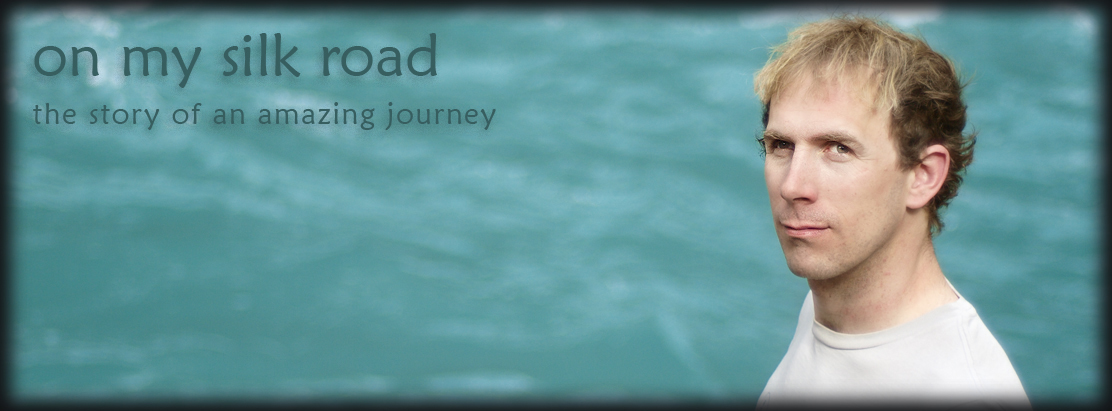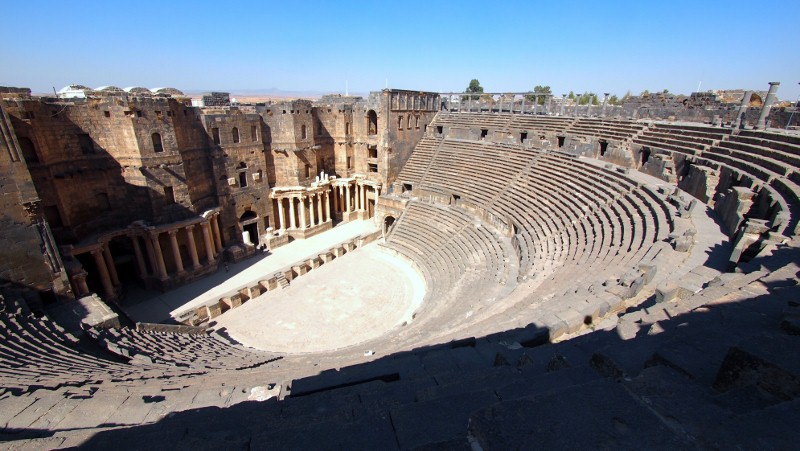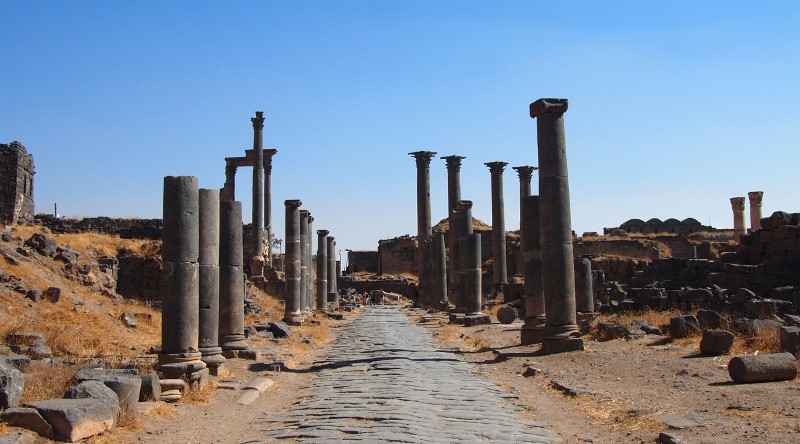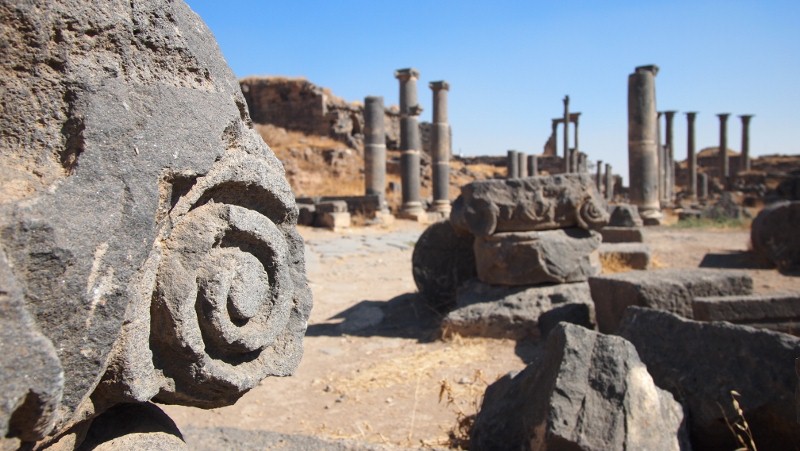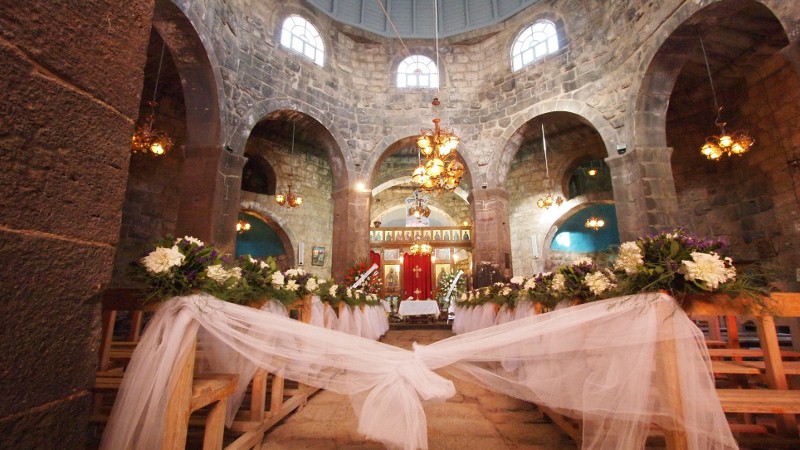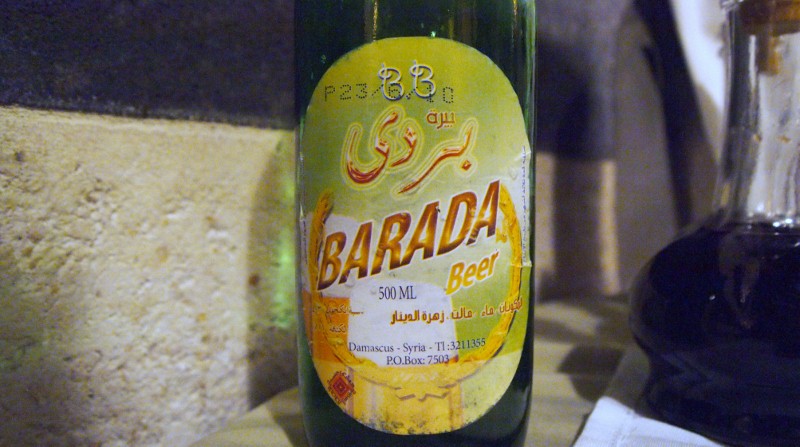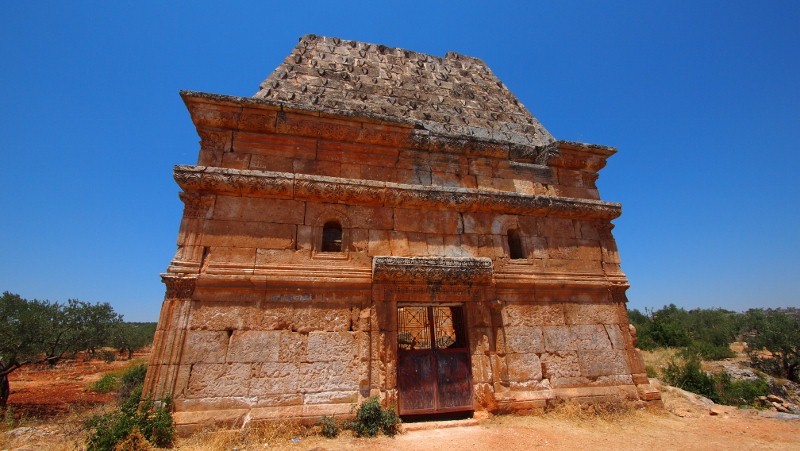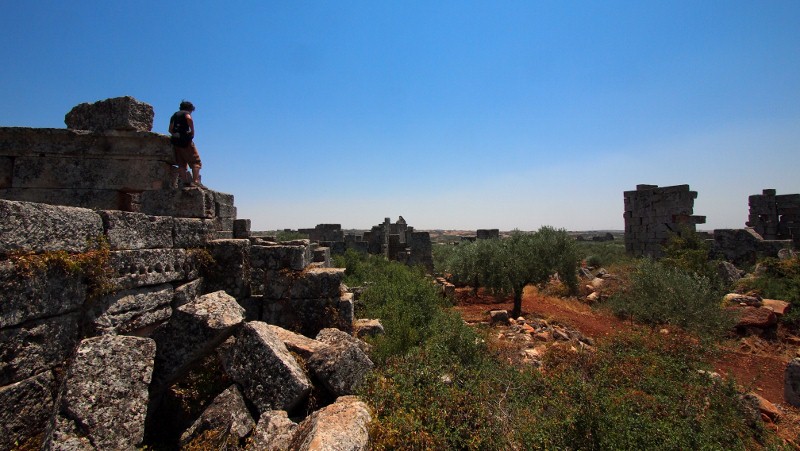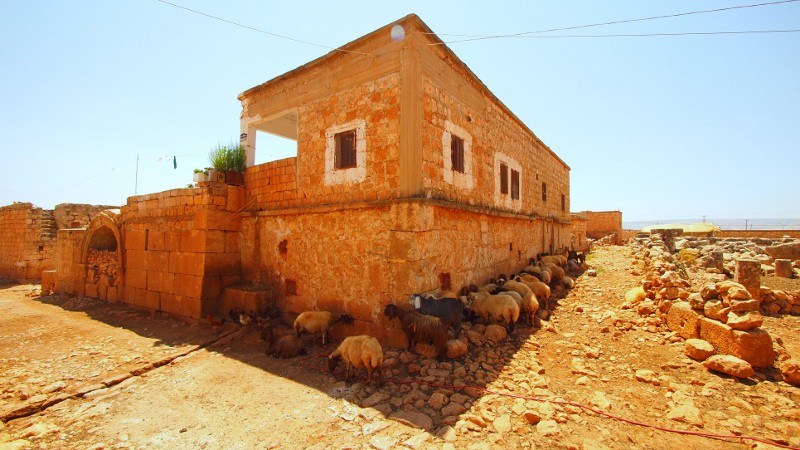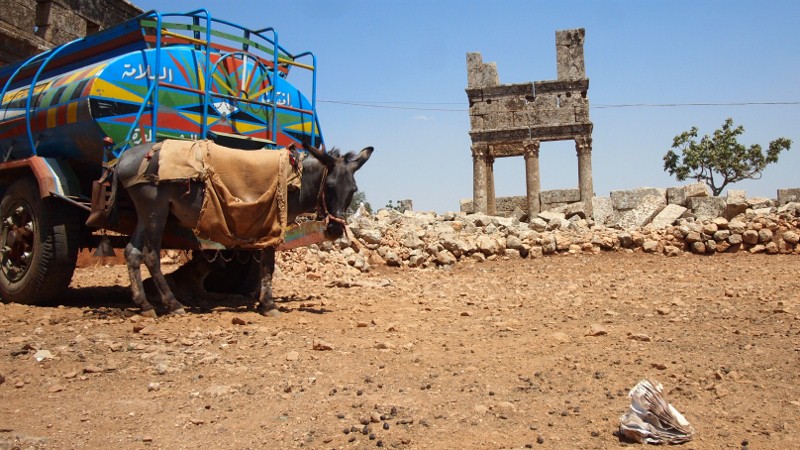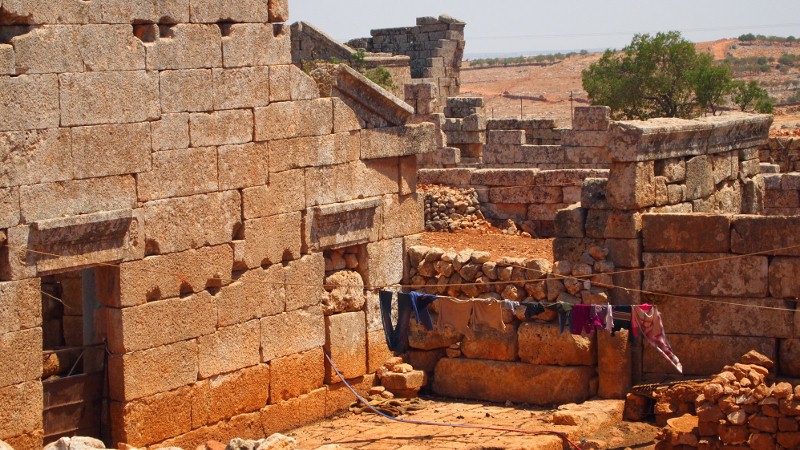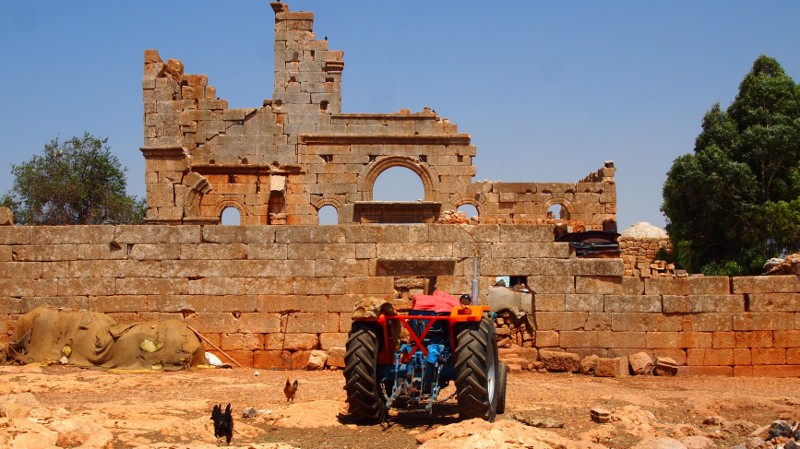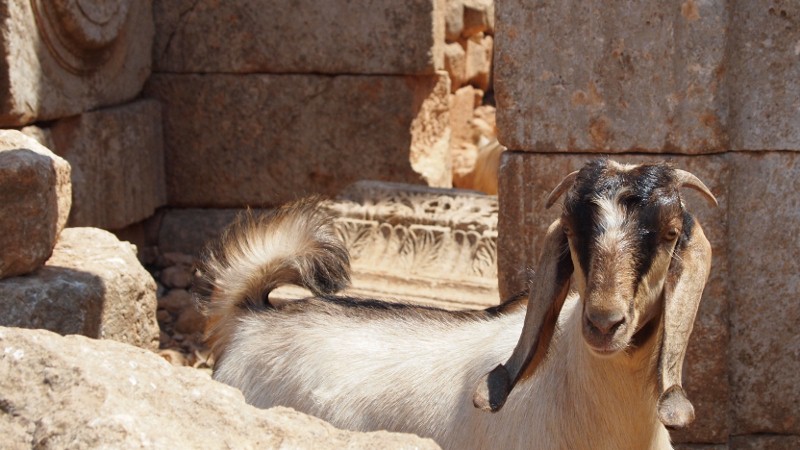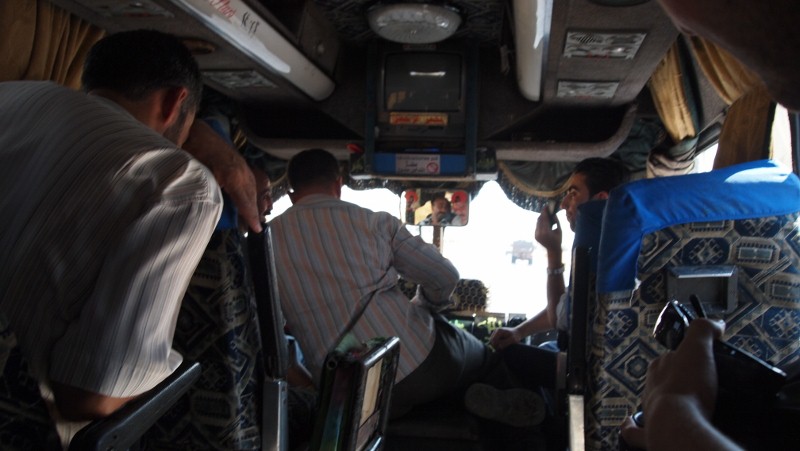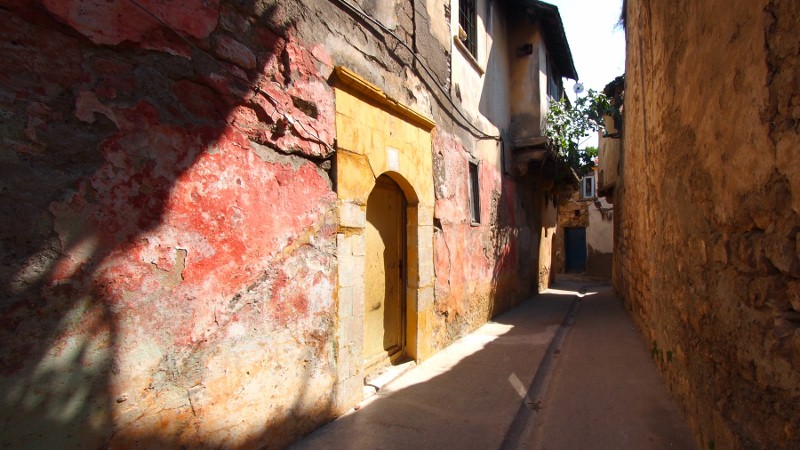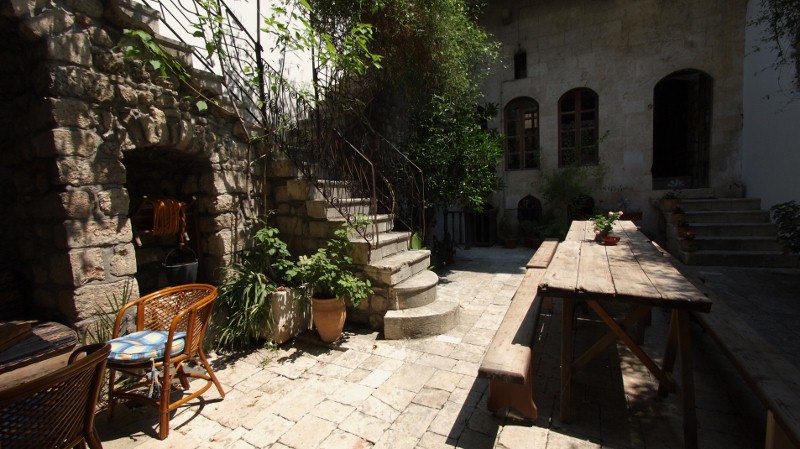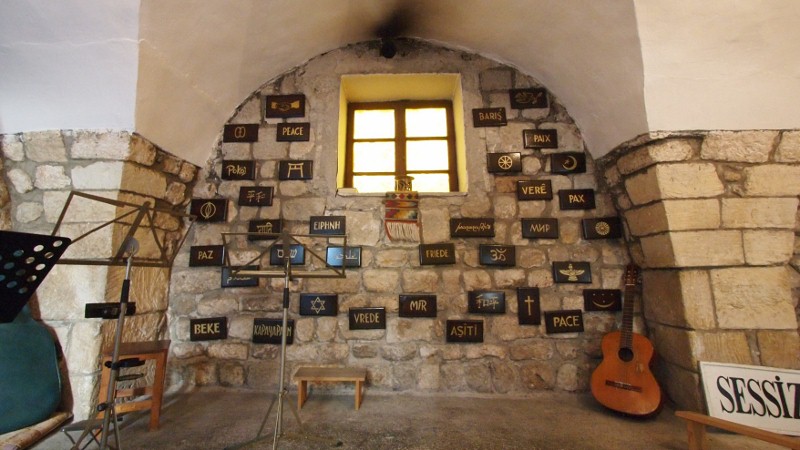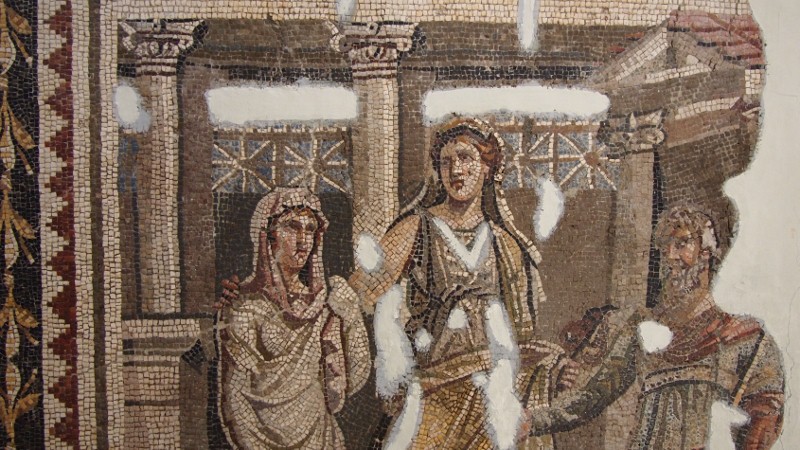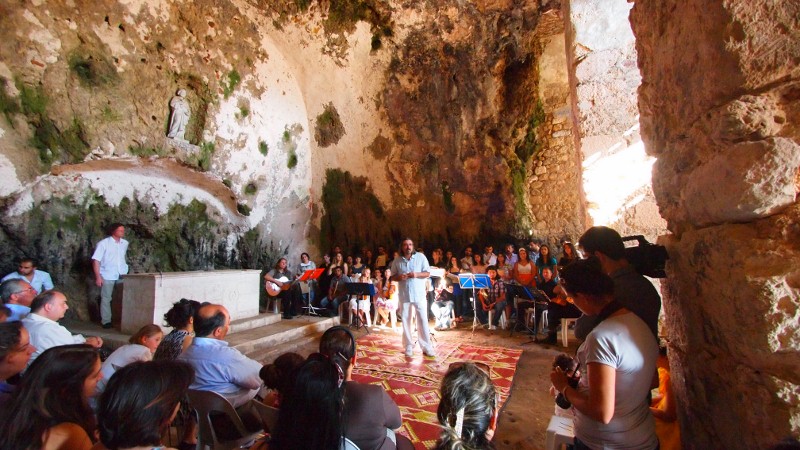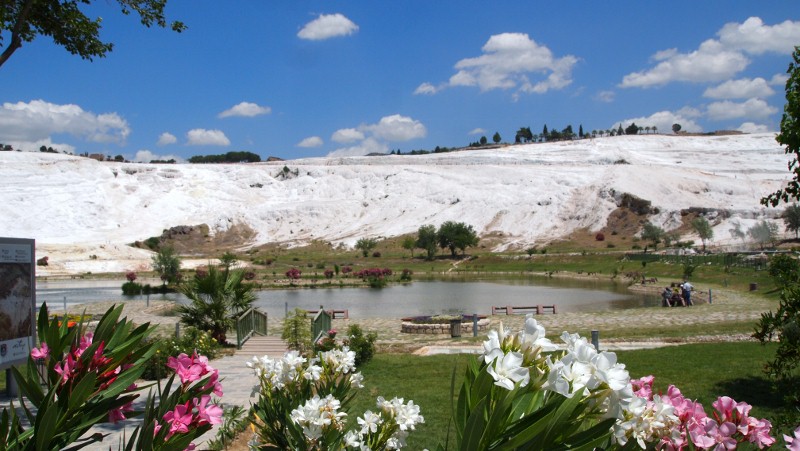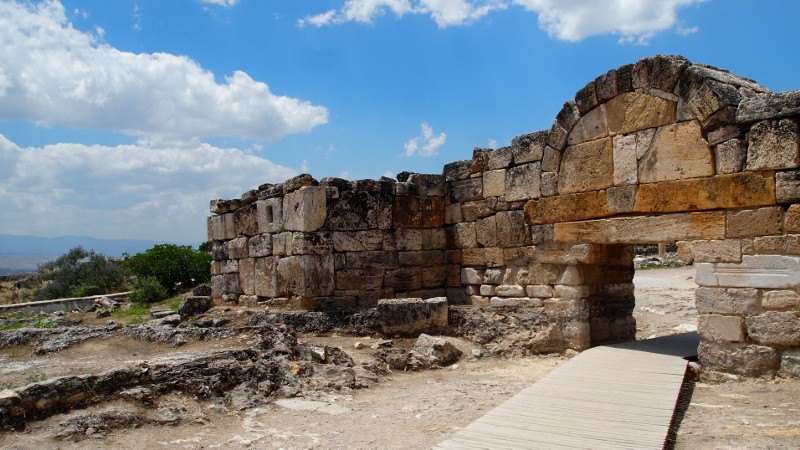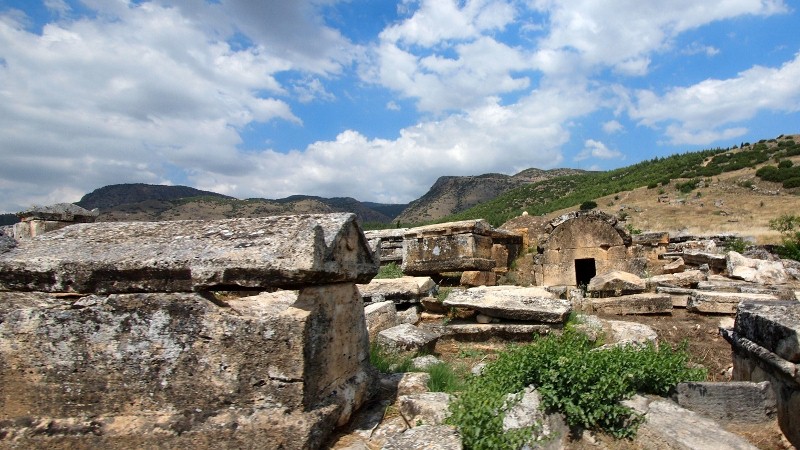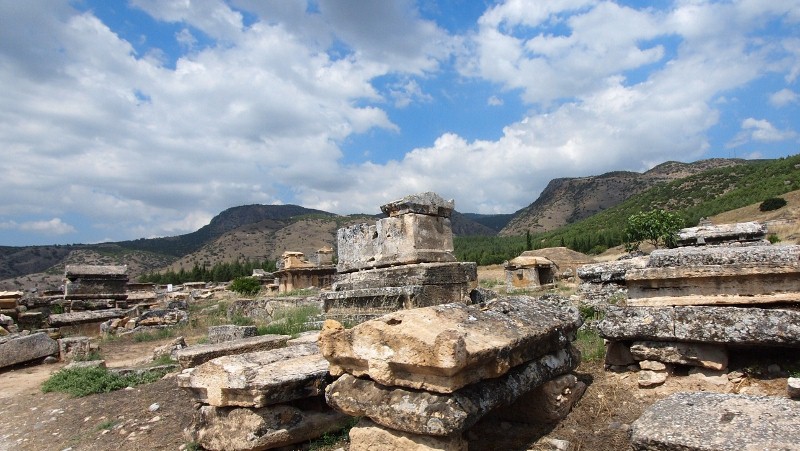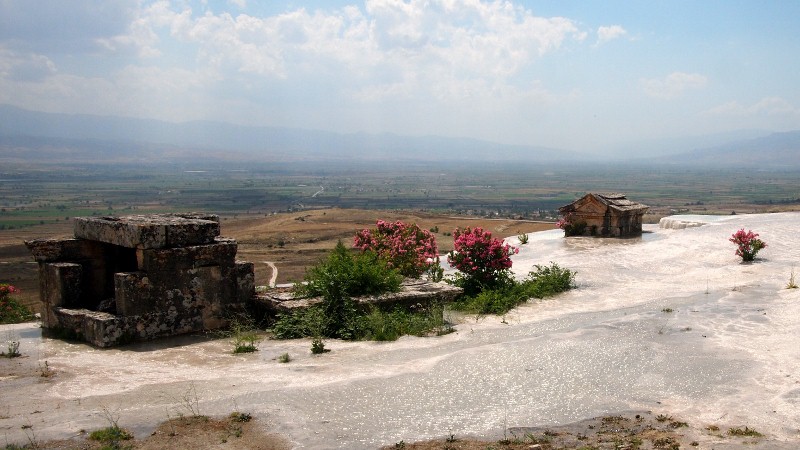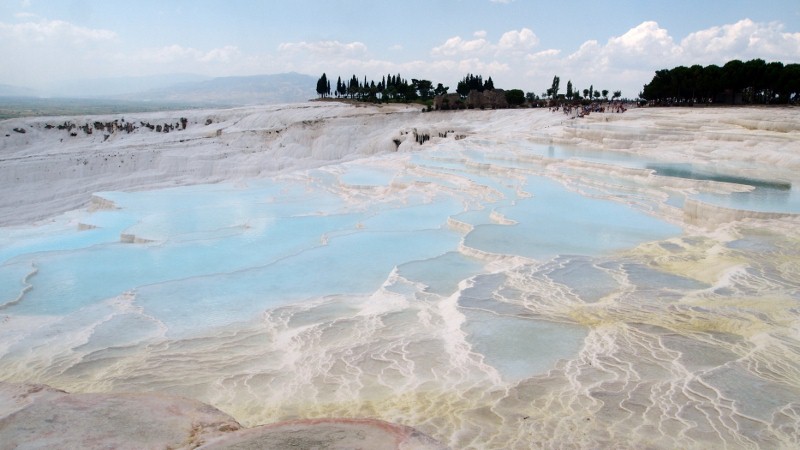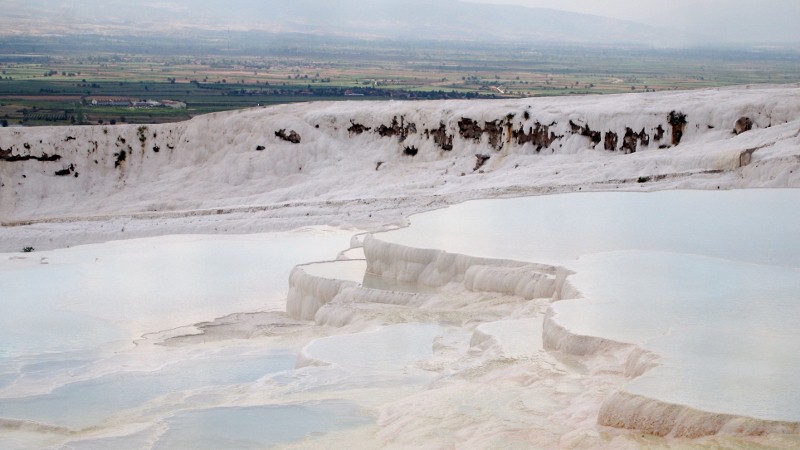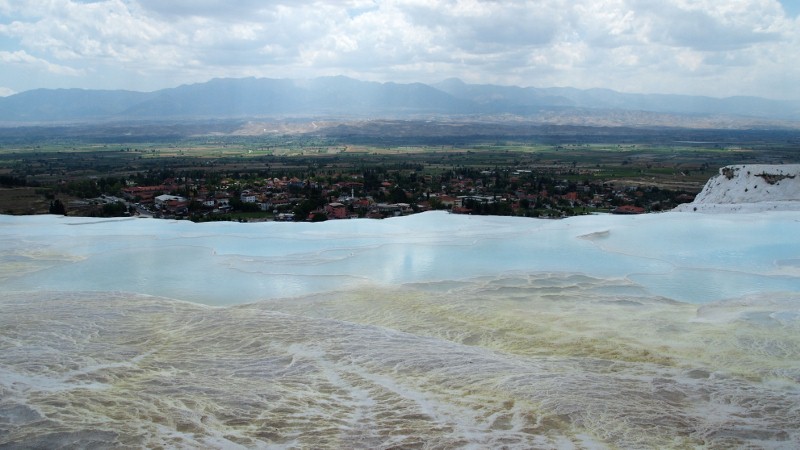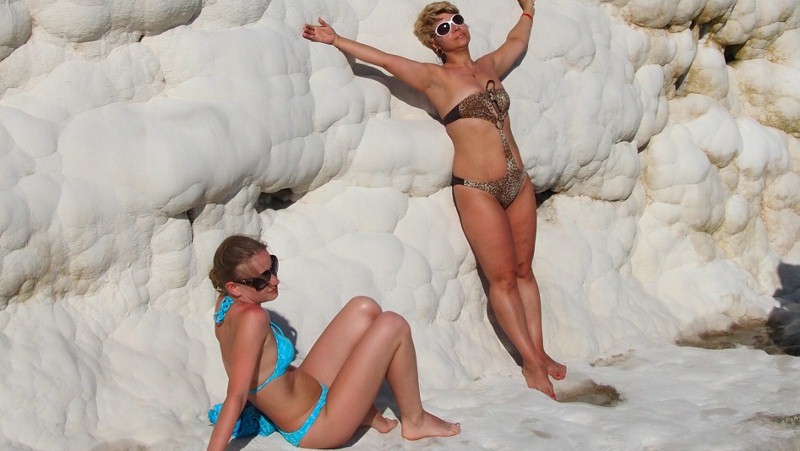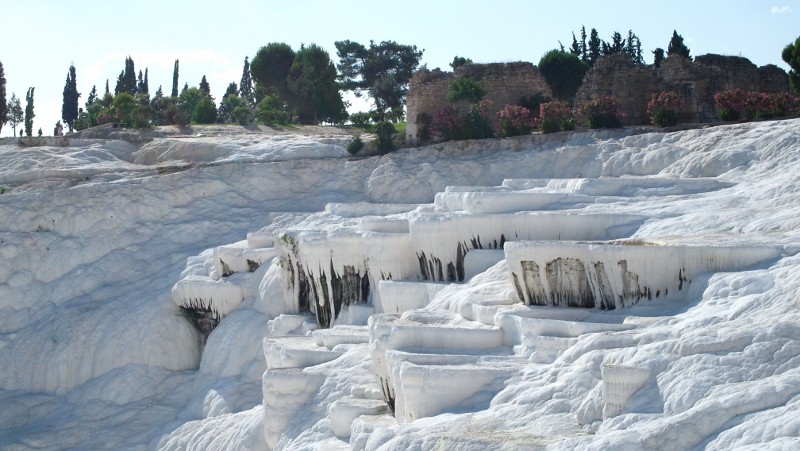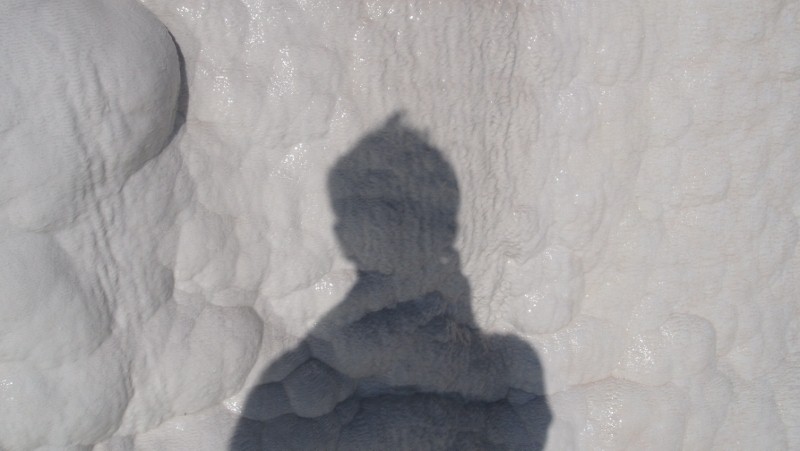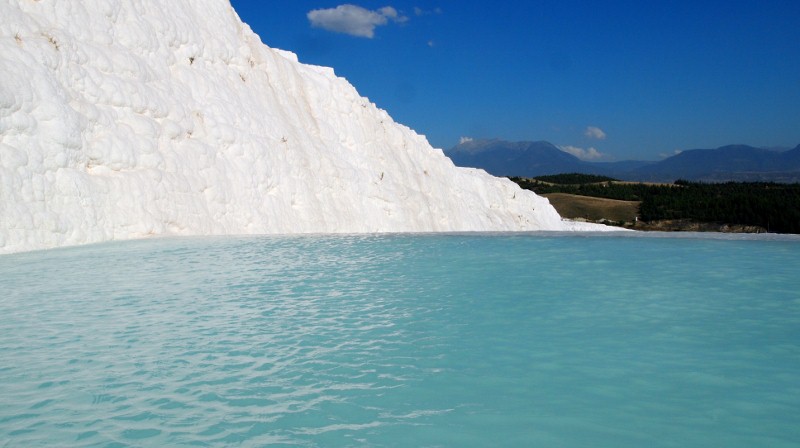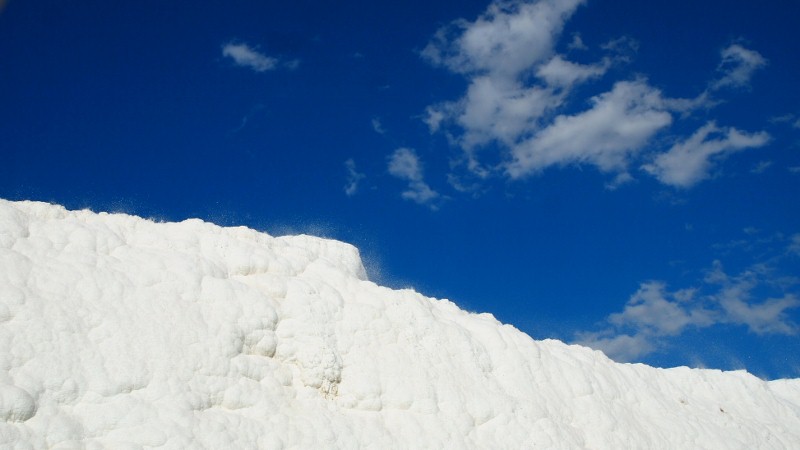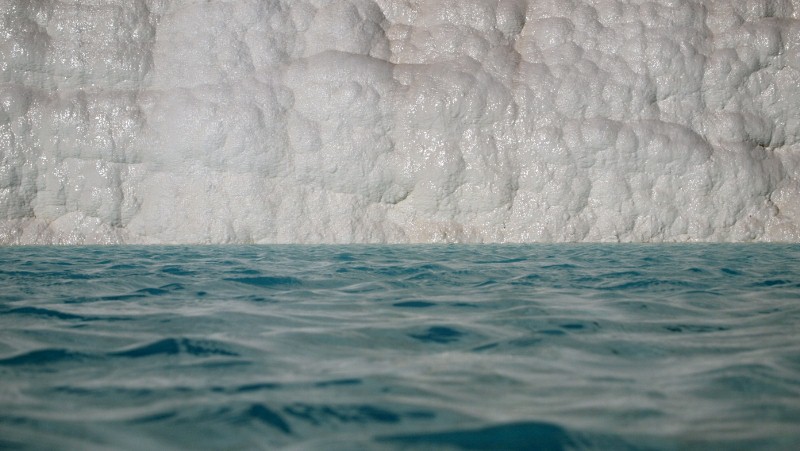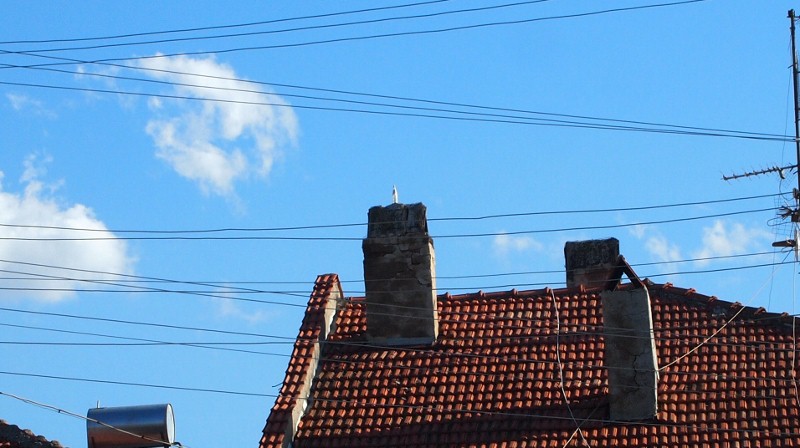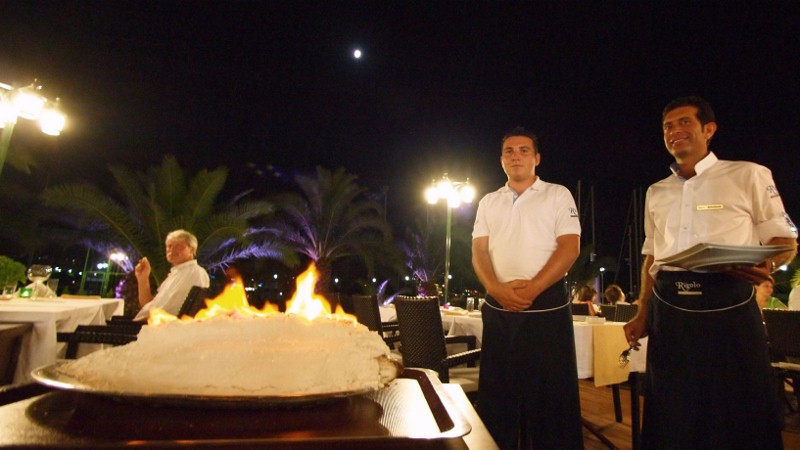I leave the Aegean sea where Kudasai goes by the coast to Syria. The first place I stop is Dalyan on the shores of Dalian river where the Kaunos ruins can found, a Carian settlement of 10th century B.C.
Here the tourists smell mosquito repellent, seems to be the perfect habitat, that’s why in ancient times this was a malarian zone. The foreigners blamed the figs as they were very common in the area. Near Dalyan is Iztuszu beach that is protected due to the turtles that come to lay the eggs in it’s sand, they are massive up to 130 Kg.
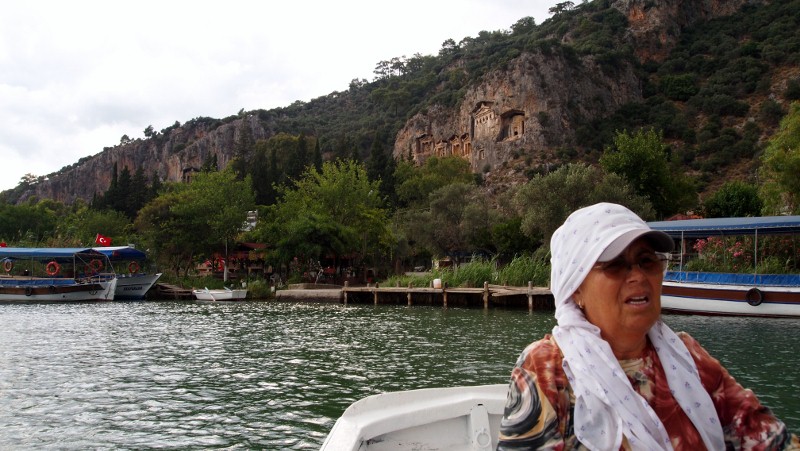
To go to the ruins you have to cross by boat, in the picture is a boat woman.
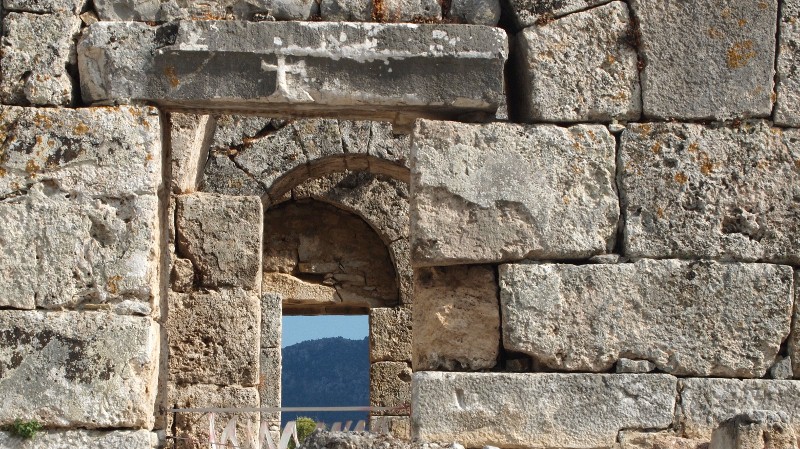
I explored Kaunos surrounded by lizards and yellow winged grasshoppers. In th entrance loud disco music was playing, as the ruins were so big I left the sound behind me very quickly, but while walking in the ruins I could hear the call to pray from a nearby mosque. That was the soundtrack.
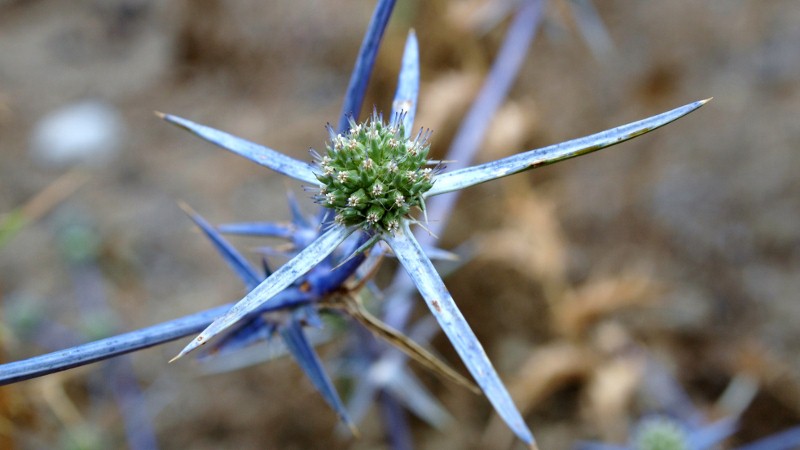
Thistle, new word for me. Loved the colour.
Next day I had breakfast in the terrace overlooking the tombs in the cliff, the oleanders‘ smell. I prepare the things to go to the Dalaman river, the reason why I’ve come here. I like the river company, they were a mix of guides from Costa Rica, Turkey, Nepal and Ukraine. They managed the safety in the river very well so I paddled very comfortably. The kayak they let me was really bad but as the river wasn’t difficult it gave the day a bit more of emotion.
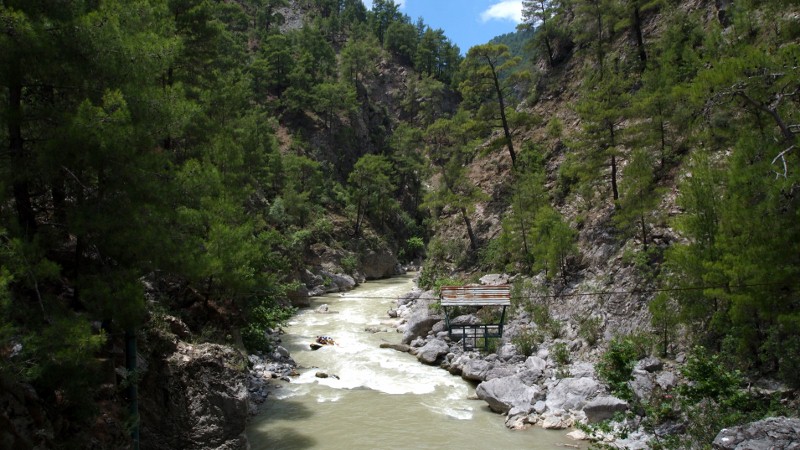
The guides were apologizing for the colour of the water, normally is a wonderful blue but due to the previous days rain it got cloudy. I like rivers with this colour.
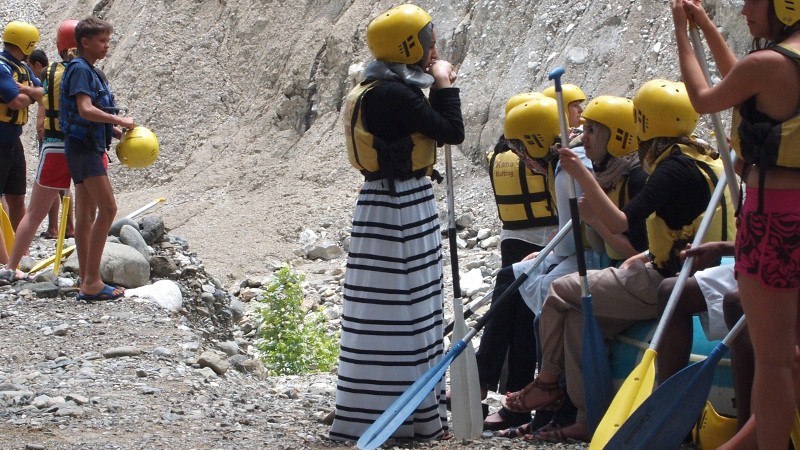
I suppose that she has not thought that if she falls into the water the skirt can cover her face making it difficult to breathe, but each one get’s into the river as they desire.
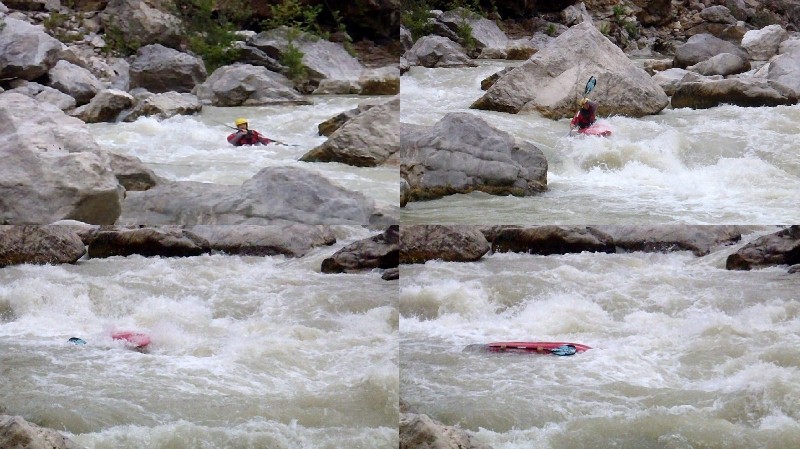
Doing the last class IV rapid I rolled, in the last picture it can be seen how I’m getting ready to roll back up with the paddle aligned with the kayak.
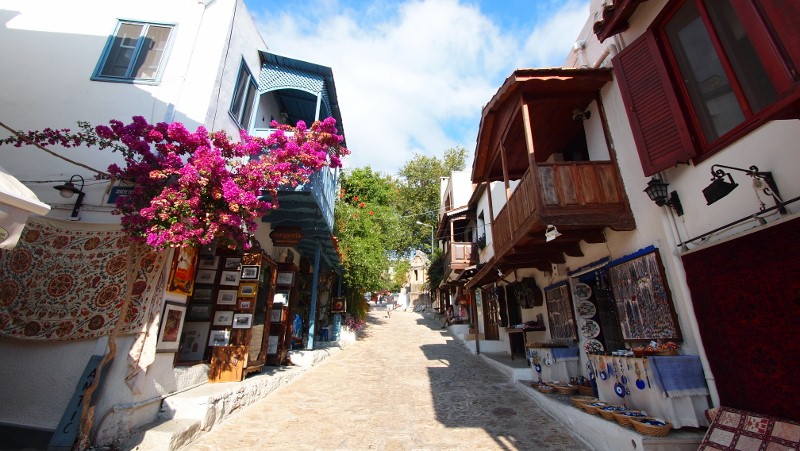
The next stop was Kas, in the middle of the turquoise coast. It’s a very charming village with bougavillas, ottoman houses, a centre with no cars and a seaside with amazing colour to explore by boat. To complete the image the mountains border the coast and a bit more inland they are as high as 3000 meters.

There are Lician tombs in the village.
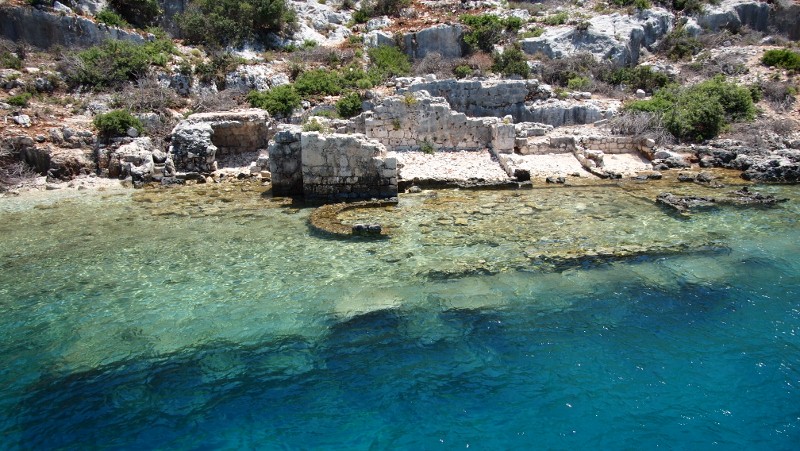
In the morning I go to the port to get a boat to go by the coast and to see some of the ruins of the area. This excursion cost like 20 Euro to spend the day in the boat and you get food.
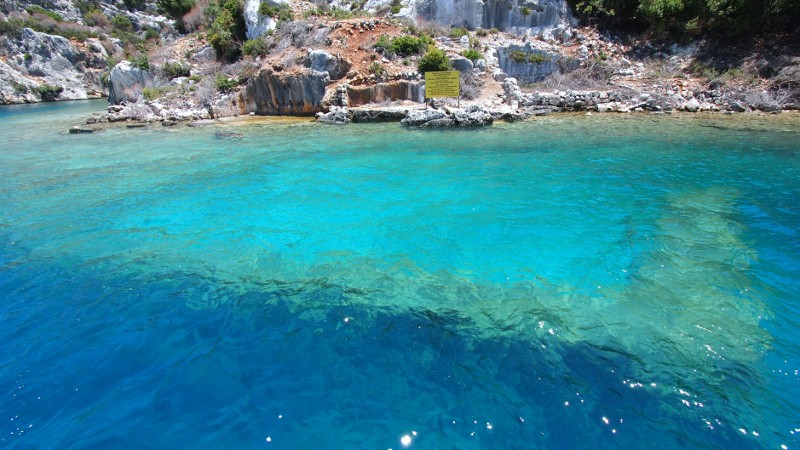
Kekova is a gorgeous submerged city, the earthquakes of the second century sank it. It’s forbidden to stop the boats or swim.
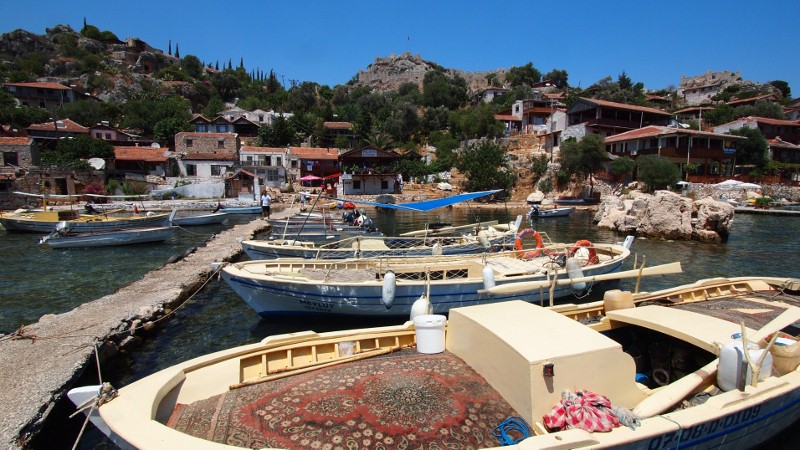
We stopped in Ucagiz village that is on an island.
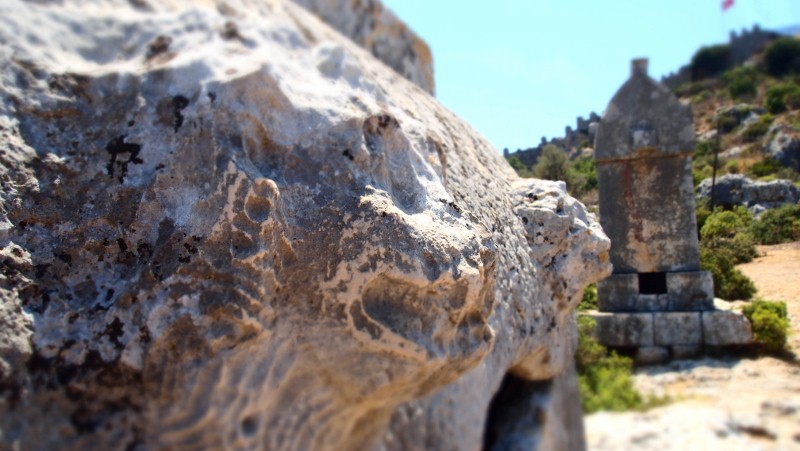
I didn’t wanted to pay the entrance to the little castle so I went around to see what could I see and I found this Lician tomb just for me.
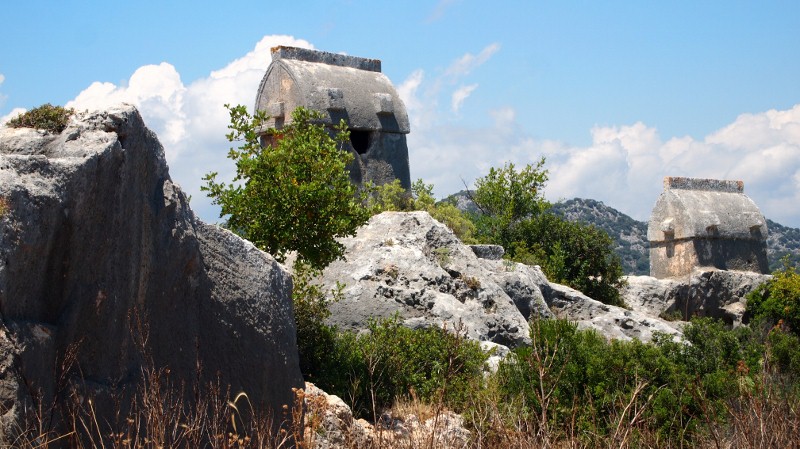
Turkey has two types of vipers. The ottoman(didn’t make a big effort to get the name…) is very poisonous.
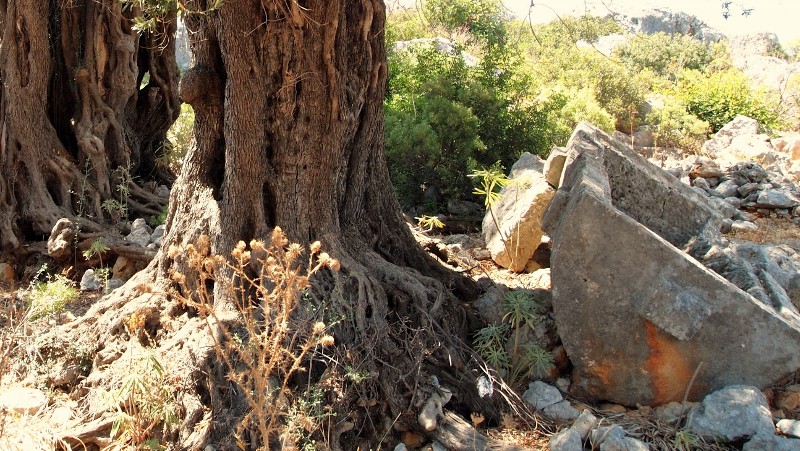
The picture is a bit too burnt, but at least you see how the place was.

I bought tea from him and after the picture he gave me a granddad kiss. He cultivated the tea himself.
On the boat I met a French woman, she loved Turkey having been here 20 times she had travelled all over the world including Afghanistan 40 years ago, she had also travelled all around Africa providing aid when she was young, she was my friend of the day. We were talking about Greece and Turkey rivalry. They really dislike each other, for example the Greeks still call Istanbul, Constantinople in some maps.
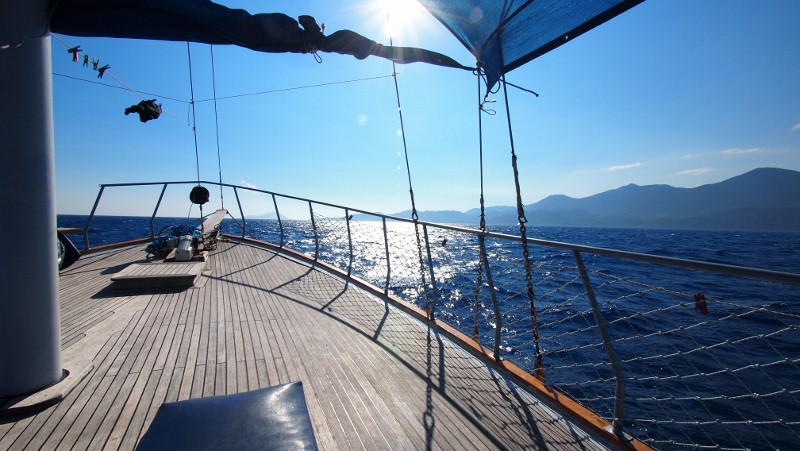
On the way back to Kas after a good day. Apart from the memories of the ruins what I’ve liked the most has been diving. There were not too many fish but diving in the silence of the blue water while the rays of light penetrate the surface is just blissful.
My last visit through the coast is Antalya. More otoman houses, this time on the top of the hill overlooking the sea. All the coast is packed with tourists, I expected this from the places nearby Ephesus but it spreads all along the coast.
Here are the Taurus mountains, the country has 70% of the territory covered with mountains and near the city a part is protected as the Kopruli national park. I went kayaking in the river but it was a mistake, there were hundreds of rafts and literally thousands of clients, have never ever seen anything like that, instead of seeing the river you’d see rafts and rafts. A huge mistake, I had to make an effort to enjoy, there was zero contact with nature.
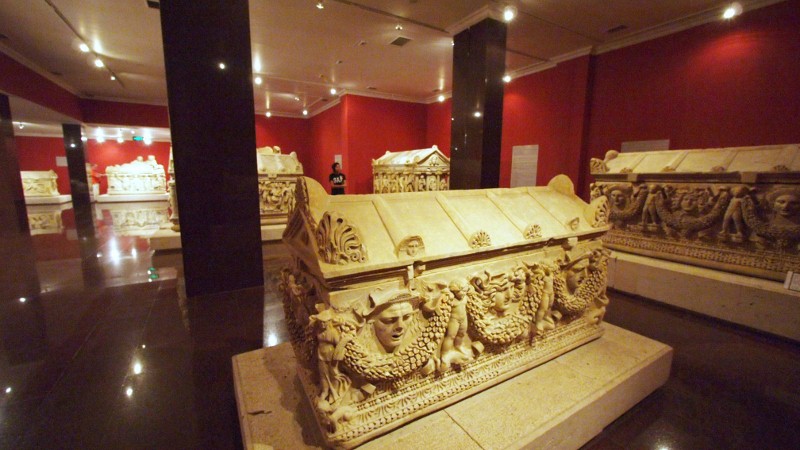
Antalya has an spectacular museum with items compiled from the ruins around. Here is the sarcophagus room.
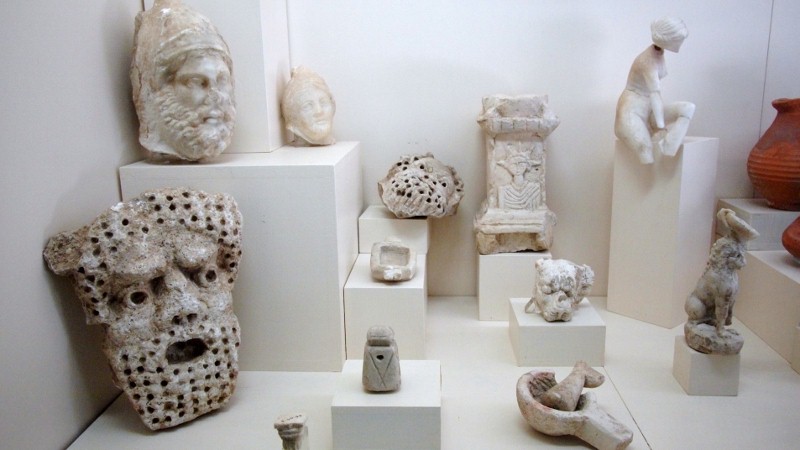
The face on the left is the one I liked the most. In fact I only put pictures of museums to pretend that they are interesting.
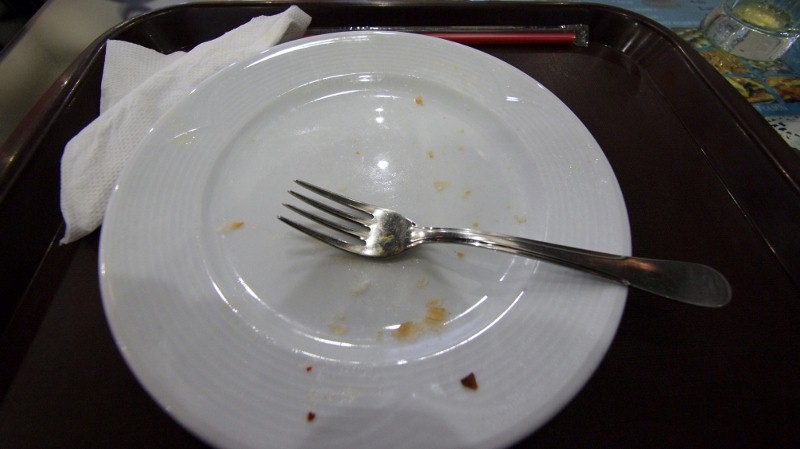
I eat a gozleme, something like a creppe. By the time I want to take it a picture I´ve finished it!
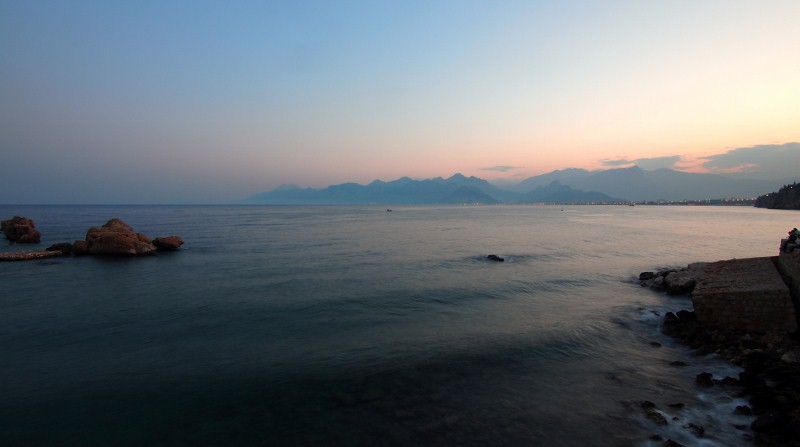
The sunset from Antalya with Olympus mountains in front(nothing to do with Greece) It would have been a better choice to stay here as it’s quieter as it’s further from the International airport.
The next post will be a video from Syria. Yes a video after a while!!
See you soon
Fernando
